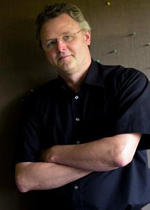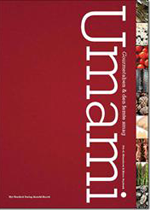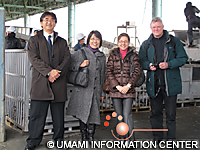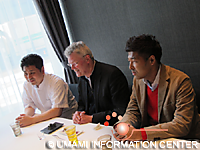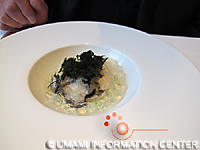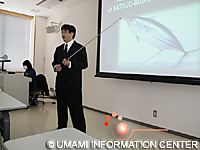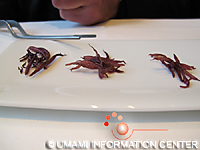Danish seaweed expert, Professor Ole G. Mouritsen visited Japan.
July 2013
As is common, umami is becoming popular in Nordic countries such as Denmark, Sweden, Norway, and Finland, which are rich in nature. While leading chefs created their original dishes incorporating the umami of their local ingredients, children learned about umami as a session of their Taste Day program in Denmark.
Dr. Ole G. Mouritsen, Professor, Center for Biomembrane Physics, Dept. of Physics, Univ. of Southern Denmark and Advisor, Nordic Food Laboratory, has been working in wide range of fields beyond his major to stimulate peoples' curiosity about science through hands-on activities on everyday-life subjects. Writing various books one after another such as those on sushi, umami, and seaweeds, he has been working to connect scientists and chefs, science and cuisine, as a technical advisor to the Nordic Food Laboratories that was established by Danish chefs. The Umami Information Center has had good relations with Prof. Mouritsen through exchanging information on umami, especially seaweeds, for the last several years. We are happy to report on his visit to the katsuobushi factory and the trialogue with Chef Koji Shimomura, French cuisine chef and Dr. Kawasaki, Japanese scientist.
The Umami Information Center was honored to be asked to arrange a visit to a katsuobushi factory in Yaizu, Shizuoka Prefecture. With support from Mr. Toru Tomimatsu, president of the Katsuo Technology Institute, the doctor visited Yaizu sea port to look at the landing of frozen katsuo, or bonito. He visited the Katsuo Technology Institute a number of times where Mr. Tomimatsu gave lectures on the production process of katsuobushi. Then, he was guided to the nearby factory to Yanagiyahonten to see the katsuobushi production line. In the smoking process, he entered the smoking room and gained experience through his senses of sight and smell. Dr. Mouritsen, who has a strong interest in Japanese cuisine and published a book on sushi, enjoyed his visit to the katsuobushi factory.
Returning to Tokyo, Dr. Mouritsen joined the tripartite talks between Chef Koji Shimomura, Dr. Hiroya Kawasaki, and he. This event was arranged by the culinary magazine Senmon Ryori. Chef Shimomura is knowledgeable about science and Dr. Kawasaki is versed in the culinary arts. They had an active conversation through the professor's subject, seaweed, covering culinary fields to science. They tasted Chef Shimomura's original recipe "Oyster cooked in seawater and chilled served on a gelee of seawater and citrus juice with a lichen flavoring." After tasting, Dr. Mouritsen introduced the activity of the Nordic Food Lab where he plays a leading role as a scientific advisor. He talked about the fact that dalse, a Nordic seaweed, contains umami and with which Rene Redzepi, owner chef of the world-famous restaurant NOMA (Copenhagen), made ice cream using cows'-milk-simmered dalse. Rene came to be deeply interested in Japanese cuisine and umami of tangle on the occasion of his visit to Japan.
Dr. Kawasaki, who participates in various activities related to culinary fields, such as the Japanese Food Lab, while he works as a researcher in Ajinomoto Co. Inc., shared his knowledge on seaweed. Their conversation continued until dinner.
Aiming to contribute to a good and healthy dietary life, the Umami Information Center continues to conduct research on the function and application of umami from two standpoints, culinary and scientific.
